What is the symbolism of different colors in dreams?
What does the color red mean in dreams:
In dreams, colors wield the power to mirror our deepest emotions and psychic states, and red, with its primal force and psychological weight, offers a particularly vivid palette of symbolism. The color red in dreams may reflect the journey of passion and emotion that color psychology outlines in phases of stimulation. Initially, a dream awash in pallid red tones could suggest a phase of emotional dormancy, where the dreamer is experiencing a void of feeling or a disconnect from their desires—akin to anhedonia. This lack of color intensity mirrors the absence of emotional vibrancy in waking life.
As the dream narrative intensifies and the red deepens, it may illustrate the tumultuous and unruly nature of misdirected passion, where emotions and impulses become untethered from the rational self. This misalignment of passion in the dreamscape might be symbolized by chaotic scenes or scenarios where the dreamer feels lost or out of control, reflecting the frenzied experiences of phase two red stimulation. Such imagery could serve as a subconscious cue for the dreamer to reexamine their waking life for potential areas of emotional excess or misdirected energy.
Progressing to a more saturated and harmonious shade of red in the dream signifies the third phase of passion, where the emotion is no longer wild and erratic but instead is integrated into the dreamer’s sense of purpose and fulfillment. A dream imbued with such vibrant, balanced red might symbolize the dreamer’s attainment of a harmonious state of being, where passion and reason align, guiding them towards a fulfilling and directed use of their energy.
Underlying these psycho-emotional dream experiences are the physiological responses elicited by the color red, deeply rooted in the brain’s basal ganglia. The influence of red on these brain structures suggests a neural basis for the powerful feelings and themes that dreams colored by this hue may evoke. The basal ganglia’s role in processing the red spectrum illuminates why this color can elicit such a broad range of emotional and behavioral responses in dreams, from the anhedonic to the harmoniously passionate.
Thus, the appearance of red in dreams can be a symbolic odyssey through the phases of passion as understood in color psychology. Each shade and intensity of red in the dreamscape may reveal the dreamer’s innermost passions, fears, and potential for emotional evolution, with the basal ganglia providing the neurological stage upon which these vivid colors play out in our nocturnal narratives.
What does the color red-orange mean in dreams:
Unlike its primary color constituents, red-orange offers a complex dance of stimulation that impacts our psyche in multifaceted ways. The initial phase of encountering red-orange in dreams might manifest as a psychic stasis—an emotional freeze that can symbolize a period of life where movement feels inhibited, and one might be playing the role of the ‘good soldier,’ doing what is expected without question.
Dreams drenched in the shades of phase two’s red-orange may bring forth feelings of guilt and over-responsibility, perhaps a reflection of the burdens one carries in their waking life. For those in caregiving or high-stress jobs, this phase in dreams may act as a mirror to ‘compassion fatigue,’ a state where one’s empathy becomes a weight rather than a bridge to others. The rigidity experienced in this phase can reveal a subconscious grappling with boundaries and personal limitations.
Transitioning into the therapeutic liberation of phase three, red-orange in dreams may signify an arrival at a more joyful and creative phase of life, suggesting a readiness to shed inhibitions and engage with the world with renewed playfulness and a sense of creative spirit. This phase of dreaming may encourage the dreamer to explore new forms of self-expression and find balance in their emotional lives.
The temperoparietal junction’s involvement in the perception of red-orange connects deeply with our sense of empathy and our ability to differentiate the self from others. Dreams that heavily feature red-orange could be signaling a need to reassess one’s boundaries or a call to develop a healthier empathetic connection without losing oneself in the process. The right prefrontal cortex’s association with these wavelengths ties into our capacity for judgment and personal insight, implying that red-orange dreams may prompt a re-evaluation of our decisions and attitudes.
Clinically, the potential of red-orange visual stimulation to effect change is profound. Its capacity to ease the grip of negative emotions such as anger, sadness, and fear speaks to its power in psychotherapeutic contexts. When it comes to movement disorders or motivational issues, red-orange’s influence on the basal ganglia could offer promising therapeutic avenues. Its potential to adjust anxiety levels and movement disorders is especially poignant, suggesting that beyond the dream world, red-orange has tangible benefits that could translate into therapeutic practices.
In the realm of dreams, then, red-orange is not merely a color—it’s a symbol of our struggle and subsequent freedom from the emotional chains that bind us. It represents the journey from frozenness to fluidity, from overbearing responsibility to a balanced sense of self that embraces both empathy and play. Dreams illuminated by red-orange hues may very well be our subconscious nudging us toward emotional healing and personal growth.
What does the color blue-green mean in dreams:
Blue-green, with its serene and tranquil aura, invites a journey of self-discovery and inner harmony. This hue serves as a symbol for the quest for wholeness in the human experience, touching upon various states of being that mirror our own internal evolution.
In the dreamscape, the appearance of blue-green may signal an initial detachment from the emotional turbulence of waking life, where one floats in a sea of thoughts and reflection. This can be a protective phase, allowing for intellectual processing without the distraction of intense emotional currents. Individuals may dream of vast, open skies or deep, calm seas—a manifestation of this contemplative state.
As we navigate into the second phase, blue-green transforms the landscape of our dreams into one where emotions swell like tides, defying the linear logic of thought. Here, dreams may become more vivid, filled with a collage of feelings that may not immediately make sense upon waking but reflect our deeper emotional undercurrents. This phase is akin to the crashing of waves against the shore, a reminder of the raw power of our internal emotional world.
Progressing into the third phase, blue-green dreams herald the arrival of balance. Emotion and cognition are no longer at odds but dance together gracefully. Dreams may present scenarios where resolution and peace are found, where once conflicting elements now coexist harmoniously. This culminates in a representation of emotional intelligence—a wholeness that we all aspire to achieve.
The biological symphony that plays out with blue-green stimulation is as intricate as it is profound. The paraventricular nucleus and the DVC, orchestrating a response to emotional nourishment or its absence, hint at why blue-green can evoke such a spectrum of feelings. Our dream visions might be reflecting this deep physiological and psychological interplay, with scenarios that resonate with the heart’s and body’s reactions to emotional presence or void.
Dreams tinged with blue-green may also tap into our most profound sources of love and connection, as the caudate nucleus becomes engaged. The passionate love that Helen Fisher describes can appear in our dreams as a symbol of obsessive desire or as a reflection of the rewarding depth of affection. In our subconscious, the intertwining of love’s complexities with the tranquility of blue-green may serve as a signal of our mind’s endeavor to understand and regulate our deepest yearnings and fears.
The color of wholeness in dreams, therefore, is not merely a static symbol but a dynamic and living process. Blue-green carries us through the ebb and flow of detachment and passion, guiding us toward the serene shores of emotional maturity and balance. It is a testament to the color’s potential to heal and harmonize, painting our dream world with the strokes of inner peace and holistic well-being.
What does the color blue mean in dreams:
Blue’s presence in our subconscious landscapes navigates us through the complexity of communication and the emotional dimensions associated with it. Dreams draped in shades of blue often reflect our innermost struggles and yearnings for connection through verbal exchange.
The initial phase of blue’s influence in our dreams may present us with scenes where we are unable to speak or be heard, symbolizing real-life instances of communication breakdown or introversion. These dreams can be frustrating or even frightening, revealing our fears around expression and being understood. In the realm of the subconscious, finding oneself speechless or ignored can be a reflection of feelings of inadequacy or the internalized pressure to remain silent in waking life.
As we move into the second phase of blue’s influence, the dream world becomes a stage for the outpouring of words, where we may find ourselves in the midst of intense dialogues or overwhelming monologues. This phase can also reflect our defensive nature in communication, where words become both our armor and weapon. Dreams may amplify these experiences, highlighting conflicts and the power dynamics in our relationships that revolve around verbal expression.
In the transformative final phase, blue leads us to a place of equilibrium in our dream conversations. The ability to listen empathically and communicate effectively is a sign of emotional and psychological growth. Dreams may show us engaging in meaningful conversations or resolving long-standing misunderstandings, indicating a maturing of our communicative abilities.
The potential hazards associated with blue light in our waking world subtly infiltrate our dream consciousness, possibly presenting as metaphors for overstimulation or the invasive nature of technology in our lives. Dreams that feature an unsettling presence of blue light might mirror our subconscious processing of these physical and psychological impacts.
Blue’s vast influence over our neurological functions, from language centers to the suprachiasmatic nucleus, is profoundly symbolic in our dreams. It hints at the deep-seated connections between how we communicate, process emotions, and even how our biological rhythms are maintained. For instance, dreams that revolve around the throat or voice could be expressing more than just communication issues; they may be hinting at holistic imbalances, considering the throat’s association with the thyroid and parathyroid glands.
In summary, blue, as the color of communication in dreams, reflects our journey through the challenges of expression and the quest for understanding. It serves as a reminder of our intrinsic need for connection and the delicate balance we strive for between expressing ourselves and listening to others. Through dreams, we are offered a glimpse into the depths of our psyche, where the blue spectrum plays a crucial role in illuminating our struggles, triumphs, and the intricate dance between our internal and external worlds.
What does the color red-orange mean in dreams:
The color yellow, with its warm and radiant hue, captivates the eye and stirs the emotions. It’s a color that commands attention and communicates energy. But beyond its brightness and visibility, yellow holds profound psychological significance, particularly when it appears in the theater of our dreams. The symbolism of yellow in dreams can serve as a barometer for our emotional state and sense of empowerment in the world.
The Primitive Parasympathetic Phase: Yellow and Emotional Paralysis
In dreams, when yellow manifests in its most primitive state, it often signals a period of emotional paralysis. It reflects those moments in life when we feel cornered, overwhelmed, and powerless. The appearance of a dull or oppressive yellow in a dream might be your subconscious painting a portrait of helplessness, capturing the anxiety of being immobilized by fear or uncertainty.
Dreamers might find themselves in a landscape bathed in an unsettling shade of yellow, unable to move or speak. This can symbolize the dreamer’s real-life inability to see a way out of distressing circumstances, creating a feeling of entrapment. It’s in this stage that yellow acts as an emotional echo, resonating with the depths of our vulnerabilities.
As we evolve from the paralytic effects of yellow, the color can begin to pulsate with a fiercer intensity in our dreams. It becomes not just a signal of distress, but a catalyst for releasing pent-up emotions. In this phase, yellow can incite a psychological reaction akin to anger, a surprising deviation from the commonly associated color of red.
Dreams might feature yellow in more vivid and aggressive scenarios—perhaps a room where everything is yellow, provoking a claustrophobic sensation that escalates into panic or rage. Such dreams often embody the fight response, indicating that the dreamer is grappling with frustration and the need to assert control over their waking life situations.
However, the journey with yellow does not end at anger. As the dream narrative continues to be nurtured with yellow’s energy, there can be a transformative shift towards calmness and clarity. When yellow begins to shine with a softer, more reassuring light, it can indicate a phase of empowerment and newfound hope.
Dreams may evolve to show yellow as a guiding light or a protective shield, suggesting that the dreamer is transitioning from a place of turmoil to a position of strength and optimism. Here, yellow symbolizes the dawning of awareness and the recognition of one’s own power to effect change.
The symbolism of yellow also finds resonance in the neuroscientific domain. The ventromedial prefrontal cortex, associated with processing emotions and decision-making, has a particular connection with the yellow spectrum. Dysfunctional patterns in this area of the brain can reflect the emotional paralysis and loss of control that yellow signifies in dreams.
The eventual empowerment and calmness mirrored by yellow correspond to the re-establishment of balance within the brain’s emotional regulation centers. When the dorsolateral prefrontal cortex—responsible for cognitive processes—re-engages with the emotionally driven ventromedial prefrontal cortex, there is a restoration of neural harmony. This mirrors the dream transition from anger to empowerment, symbolized by yellow’s softening hue.
In conclusion, yellow in dreams can symbolize an intricate emotional journey. It can take us from the depths of helplessness to the heights of personal power. By understanding the nuances of yellow’s symbolism, we gain insight into our own emotional states and the paths to liberation from them. Through yellow’s guidance, we can navigate the spectrum of our emotions, ultimately finding the light that leads us to a place of balance and control.
What does the color yellow-green mean in dreams:
In the tapestry of dreams, colors paint the subconscious with a palette of emotions, each shade uncovering deep-seated sentiments and inner conflicts. Among these, yellow-green emerges as a color complex in its symbolism, frequently pointing to a range of psycho-emotional states that the dreamer may be navigating.
Dreams washed in yellow-green often signify the beginning of an emotional journey marked by a state of perplexity. To dream of yellow-green might suggest that the dreamer is experiencing a moment of frozen conflict, where feelings and thoughts are in a deadlock. Unlike the alarming urgency red may convey, yellow-green does not rush—it bewilders. It indicates a scenario where progress is halted not by external obstacles but by an internal tug-of-war.
As the dreamer continues to wrestle with yellow-green, it morphs into a signal of evolving emotions. If this color dominates one’s dreamscape, it could mirror the transition from inner battles to tangible emotional responses such as anger, sorrow, or fluctuating extremes of love and hate. The term “green with envy” captures this phase’s essence. Dreams that feature yellow-green in this context may reveal feelings the dreamer harbors but has not yet acknowledged or expressed in their waking life.
Further engagement with yellow-green in the dream world may lead to a resolution of sorts. As the dreamer reconciles with the color’s vibrancy, it can blossom into a symbol of compatibility, friendship, and peace. To dream of a calming yellow-green landscape or object could indicate a subconscious move towards acceptance and the resolution of conflict, signaling a readiness to embrace a more peaceful and accommodating approach to life’s challenges.
Scientifically, the dream interpretation of yellow-green might be informed by its influence on the brain, particularly areas like the hypothalamus, which modulates our visceral emotional responses. The orbitofrontal cortex, involved in decision-making and emotional regulation, also plays a part. When this color appears in dreams, it may reflect the dreamer’s quest for emotional balance and the subconscious workings towards achieving it.
In essence, yellow-green’s appearance in dreams is a call to examine our internal conflicts, to understand our emotional responses, and to anticipate a journey toward emotional serenity. Like a guide through the complexities of the psyche, yellow-green in dreams beckons the dreamer to embrace the full spectrum of their emotional experiences, leading them from paralysis to peace.
What does the color green mean in dreams:
Green, a color deeply ingrained in nature, resonates within our subconscious, often symbolizing growth, renewal, and the emotional journey within the realm of dreams. This verdant hue carries implications of affection and a progressive path from emptiness to fulfillment.
In the dream world, encountering green might signal an initial phase of feeling emotionally adrift. This stage is characterized not by acute sadness but by a sense of void—a detachment akin to emotional numbness. It is where the heart’s garden lies fallow, waiting for the seeds of emotion to be sown. As with the despondency associated with far red, green’s first phase represents an emptiness waiting to be filled.
As one advances through the emotional spectrum of green in dreams, the second phase may unveil itself as a burgeoning awareness of deeper emotions. Dreams tinted with green could then begin to touch upon feelings of sadness, loneliness, or a sense of loss. It is as if the initial void starts to make room for a wellspring of feelings, often leading to a cathartic release, like tears that nourish the soul’s soil for new growth.
With continued engagement with the color green in our nocturnal narratives, the heart begins to blossom into the third phase. Here, green symbolizes the flowering of joy, the nurturing aspects of love, and the reciprocal dynamics of affection. To dream of a vibrant green landscape or experience might reflect a subconscious readiness to give and receive love, pointing towards a secure and autonomous approach to relationships and life’s daily dance.
The symbolism of green in dreams might also reflect the intricate dance between our emotional states and physiological responses. The paraventricular nucleus of the hypothalamus, connected to the dorsal vagal complex (DVC), mirrors the phases of green’s emotional journey. It is a system that, when confronted with a lack of affection, can prompt physical responses in the body reminiscent of an emotional drought. Green dreams might, therefore, symbolize the dreamer’s subconscious dealing with the need for emotional nourishment.
The production of oxytocin and vasopressin within this brain region further correlates with the experiences of affection and loss thereof. Green dreams may symbolize the release of these neuropeptides, signifying moments of connection or disconnection in our waking life.
Romantic love, with its intense physiological and emotional impact, activates the caudate nucleus—a brain region also associated with the thrilling highs of infatuation. To dream of green might hint at this activation, reflecting the dreamer’s deep yearnings or current experiences of passionate love.
What does the color indigo mean in dreams:
Indigo, a hue steeped in mystery and insight, often appears in dreams during times of intense self-reflection and cognitive challenges. The color’s symbolism in dreams can be understood through phases that represent a journey into the inner workings of the mind.
Dreams infused with indigo may begin at a phase where one encounters a mental impasse—where the ability to process thoughts or make decisions feels inhibited. This can manifest as an experiential blankness, akin to being lost in a dense fog with no compass. For some, this may be represented by the incessant churn of obsessive thoughts, where the mind circles a problem without finding an exit.
As the dream journey with indigo progresses, one might find themselves in a labyrinth of thoughts. Here, the mind is active but cluttered, characterized by indecision and a cacophony of ideas that refuse to line up in order. This phase is marked by a kind of cognitive disarray that can feel as confrontational as it is confounding, as if one is in a debate with their own psyche.
Dreaming in deeper shades of indigo signifies an evolution toward mental clarity and enlightenment. In this stage, the mind’s eye opens fully, allowing insights to pour in. The once tumultuous sea of thoughts settles into a clear lake, reflecting a profound understanding and heightened perception. This is the phase where solutions become apparent, and the dreamer may wake with a newfound sense of direction or purpose.
The dream symbolism of indigo closely parallels the role of the hippocampus in cognitive functioning. This brain structure, vital for memory and learning, is implicated in how we navigate our dreams’ indigo-colored corridors. It’s the hippocampus that helps us form and retrieve the memories that are often replayed or reinterpreted in our dreams.
Dreams tinted with indigo might also mirror the state of the hippocampus—whether it’s struggling with the aftermath of trauma or flourishing with new growth through neurogenesis. As such, indigo dreams could reflect either the challenges we face in our waking cognitive processes or the healing that’s taking place within.
The presence of indigo in dreams can sometimes indicate a subconscious healing process, especially in relation to memory and trauma. The color itself, in dream therapy, may be used as a tool to guide individuals toward recovery and cognitive restoration, particularly after brain injuries or psychological blockages.
In the rich tapestry of dream symbolism, indigo stands as the color of introspection and intellectual breakthroughs. It beckons the dreamer to delve into the depths of their subconscious, confront their cognitive conflicts, and emerge with the treasures of wisdom and self-awareness that lie beneath.
What does the color purple or violet mean in dreams:
In the realm of dreams, violet or purple is a color that beckons with its depth, suggesting the presence of trust and a bridge to the spiritual world. This color’s journey in dreams can be seen unfolding through distinct phases, each representing a shift in the dreamer’s psycho-spiritual state.
When violet first appears in dreams, it may emerge from the shadows of deep mistrust, akin to a reflection of paranoia. Dreams tinged with this darker shade of violet might be filled with scenarios of betrayal or deception, echoing the dreamer’s fears or unresolved issues around trust. These visions might also be populated with symbols of unorthodox spiritual beliefs or apocalyptic themes, highlighting a feeling of unease with the unknown or a sense of being spiritually adrift.
As the dream journey progresses, the intense paranoia gives way to a gentler yet persistent form of doubt. Here, the violet takes on a softer hue, symbolizing a period of questioning where one’s previous convictions may be challenged. The dreamer might find themselves clinging to old habits or beliefs that no longer serve them well, indicating an emotional attachment that needs to be reexamined.
The culmination of the violet path in dreams is a blossoming of trust and spiritual openness. This lighter, more luminous violet signifies a healing of past wounds and a readiness to embrace new perspectives. Dreams at this stage may be filled with motifs of openness, acceptance, and gratitude, reflecting an inner state of peace and a renewed trust in oneself and the journey of life.
The symbolism of violet in dreams can be intricately linked to the function of the cingulate system within the brain. This system, responsible for the seamless transition of ideas, cognitive flexibility, and emotional processing, mirrors the transformative nature of violet in dreams. When violet weaves through our dreamscapes, it may hint at an underlying process of attention shifting, adapting to new circumstances, or learning to cooperate with parts of oneself previously in conflict.
Dreams saturated with violet may also point towards the dreamer’s engagement with worry or obsessive thoughts, suggesting a call for balance and healing within the cingulate system. Engaging with the color violet in dreams can, therefore, be a sign of the brain’s natural tendency to seek harmony and resolution.
In the tapestry of dream interpretation, violet stands as a color of deep transformation and spiritual awakening. It invites the dreamer to explore the nuances of trust, to release old fears, and to step into a space of spiritual growth and enlightenment. The presence of violet in dreams can encourage one to not only confront and heal inner turmoil but also to open the heart and mind to the vast possibilities that trust in the unseen can offer.
What does the color orange mean in dreams:
In the world of dreams, the color orange is a beacon of exploration, primarily concerning our self-perception and identity. The journey through the various shades of orange in dreams can illuminate the intricate process of self-discovery and personal growth.
Initially, orange in dreams might symbolize a phase of ambiguity in self-perception. Dreamers may find themselves grappling with a sense of invisibility or a lack of clear identity, akin to being lost in a vast, undefined space. Dreams at this stage are often marked by scenarios where one feels unseen or unheard, reflecting an internal dialogue about worthiness and self-doubt.
As the dream narrative progresses, so does the emotional landscape. The second phase brings a surge of more intense feelings—ones that can be challenging and uncomfortable. The presence of orange here might translate to dream scenarios where feelings of rejection, self-criticism, or an urge to break away and rebel become central themes. It reflects a stirring of emotions that demands attention and acknowledgment, signaling a readiness to confront deeper issues.
With the ongoing presence of orange in dreams, a transformative phase is reached where positive self-perception starts to emerge. Dreams may now involve acts of courage, standing out, or finding one’s voice. This phase is a testament to a growing sense of confidence and independence. It resonates with the Jungian notion of individuation—the process of becoming aware of oneself and the greater personal potential.
The symbolism of orange in dreams is intimately connected to the functioning of the prefrontal cortex—our brain’s center for self-reflection and evaluation. The right prefrontal cortex, in particular, when engaged by the orange hue, can initiate a process of self-reassessment and memory integration that is vital for identity construction and self-esteem.
The appearance of orange in one’s dreams can signal a therapeutic journey. It can represent the brain’s natural attempt to work through issues of self-worth and identity. By engaging with the emotional and psychological dimensions that orange brings to light, one can potentially address and heal from past wounds that have affected self-perception. As such, orange in dreams is not merely a color—it’s a call to embark on a profound journey towards self-realization and empowerment.
What does the color white mean in dreams:
In the dream spectrum, white often appears as a symbol of purity and integration, though its role is nuanced and less straightforward than other colors. As a combination of the full color spectrum, white in dreams can be elusive, offering a wide range of interpretations and outcomes. Yet in certain contexts, it becomes a profound symbol with meaningful implications.
The initial encounter with white in dreams might be one of disorientation. It can manifest as a sense of being scattered or mentally disjointed, where dreamers may feel as if they’re losing their grip on the cohesive self. Dreams filled with stark white backgrounds or objects may reflect a canvas waiting to be defined or a sense of being stripped to the bare essentials, seeking form and structure.
As the journey through white continues, the dream narrative might reflect a state of internal contradiction. Dreams may oscillate between extremes, mirroring the dreamer’s struggle for balance and integration. White’s presence here signals a transitional period, where there’s an attempt to reconcile opposing aspects of oneself and bring order to the chaos.
The final phase of white’s influence in dreams heralds a breakthrough into coherence and unity. The dream scenarios become infused with a sense of peace, clarity, and inspiration. Dreamers may find themselves in dreamscapes where all elements harmoniously coexist, symbolizing an internal state of acceptance and completeness.
White’s appearance in dreams may suggest a therapeutic process towards wholeness. It can imply the mind’s endeavor to sift through confusion and find its way back to a grounded, unified state of being. Thus, white is not just a passive backdrop in dreams; it is an active participant in the journey towards personal integration and inner peace.
What does the color magenta mean in dreams:
In the realm of dreams, magenta presents itself as a complex hue that blends the calmness of blue-violet with the intensity of red, carving out a distinct psychological and emotional niche. This color is often a signifier of a multifaceted emotional journey that dreamers embark upon.
At the outset, magenta may surface in dreams as an emblem of emotional neutrality or impassivity, reflecting a state that is neither overwrought with feelings nor completely devoid of them. This can signify a period where the dreamer is in a holding pattern of sorts, processing or awaiting emotional clarity.
As the journey in the dream progresses, magenta’s role becomes one of amplifying emotions. Dreamers might find themselves experiencing a wide range of intensified feelings, suggesting a phase of emotional awakening or realization. This might involve confronting repressed emotions or becoming more attuned to one’s emotional state.
In its most evolved form within the dream, magenta transitions into a symbol of emotional security and contentment. This phase indicates a harmonious balance where safety and trust pervade, offering a healing and nurturing space. The appearance of magenta at this stage in a dream might signal a time of emotional pleasure and well-being, suggesting the dreamer has reached a place of peace and acceptance with their emotional self.
The symbolism of magenta in dreams points to an emotional process that moves from a phase of detachment or neutrality towards one of heightened feeling, culminating in a sense of emotional fulfillment and safety. It underscores the dreamer’s progress through various emotional landscapes, heading towards a state of balance and joy. Magenta’s presence can be a powerful indicator of the dreamer’s current emotional state and the potential for growth and emotional understanding.
Did you enjoy this article? Checkout the podcast here: https://gettherapybirmingham.podbean.com/
Color Psychology
Psychology of Red-Orange
Psychology of Orange
Bibliography:
- Elliot, A. J., & Maier, M. A. (2014). Color psychology: Effects of perceiving color on psychological functioning in humans. Annual Review of Psychology, 65, 95-120.
- Hoss, R. J. (2016). The Wisdom of Your Dreams: Using Dreams to Tap Into Your Unconscious and Transform Your Life. TarcherPerigee.
- Jung, C. G. (1964). Man and His Symbols. Dell Publishing.
- Kaya, N., & Epps, H. H. (2004). Relationship between color and emotion: A study of college students. College Student Journal, 38(3), 396-405.
- Whitfield, T. W., & Wiltshire, T. J. (1990). Color psychology: A critical review. Genetic, Social, and General Psychology Monographs, 116(4), 385-411.
Further Reading:
- Birren, F. (2016). Color Psychology and Color Therapy: A Factual Study of the Influence of Color on Human Life. Martino Fine Books.
- Eason, C. (2010). The Complete Guide to Interpreting Your Own Dreams and What They Mean to You. Piatkus Books.
- Fontana, D. (1994). The Secret Language of Dreams: A Visual Key to Dreams and Their Meanings. Chronicle Books.
- Hall, J. A. (1983). Jungian Dream Interpretation: A Handbook of Theory and Practice. Inner City Books.
- Taylor, J. (2009). The Wisdom of Your Dreams: Using Dreams to Tap Into Your Unconscious and Transform Your Life. Jeremy P. Tarcher.

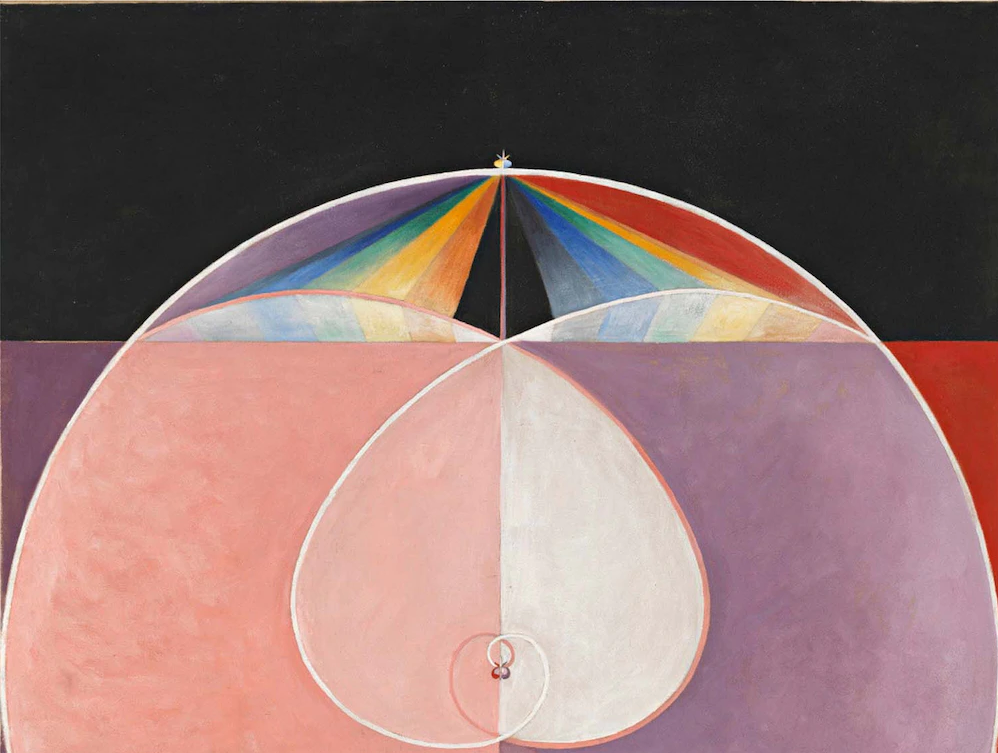







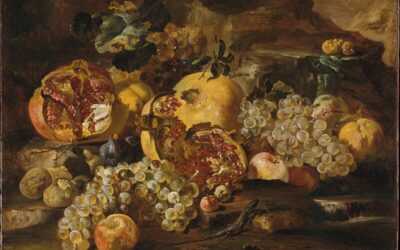

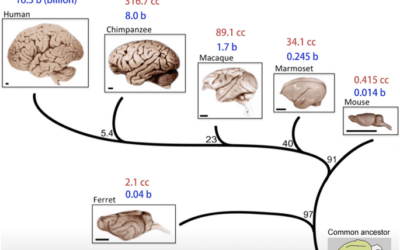



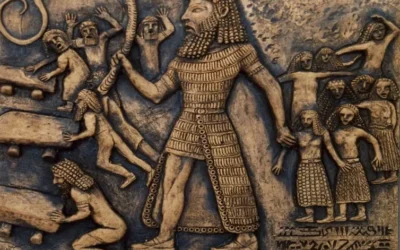

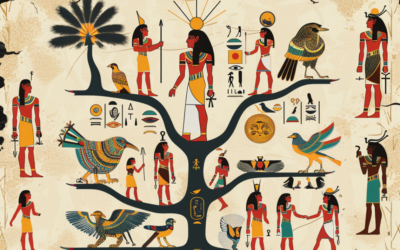

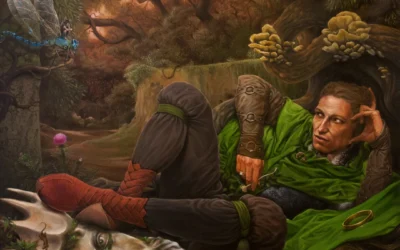

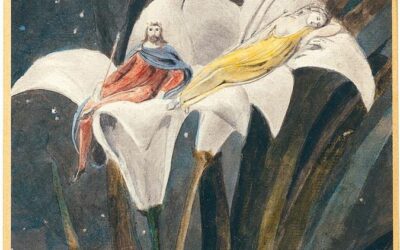





I loved exploring the symbolism of color in dreams! I’ve always had recurring dreams with a similar color scheme and now I can see connections between those colors and their symbolic meanings. This post has really helped me tap into my subconscious and understand my own dream interpretations. Thank you for sharing your insights!
This post beautifully illustrates the deep connection between colors and our subconscious. I never realized how much my dreams could reveal about my emotional state! I’m particularly intrigued by the idea that specific colors can signify different feelings and experiences. Can’t wait to explore my own dreams with this new perspective!